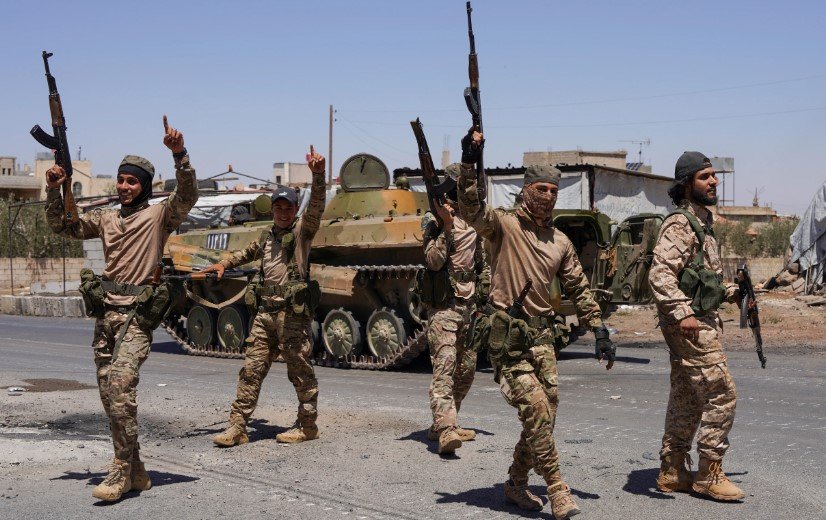Tensions in southern Syria’s Suwayda province have been simmering for months, with the area caught in a complex web of local grievances, national politics, and international involvement. Now, a fresh round of talks hosted in Amman on August 12 is expected to bring together key players to try and push the needle toward peace and rebuilding.
This upcoming meeting is no ordinary get-together. It’s a joint effort by Jordan, the United States, and Syria, aiming to chart a path forward for Suwayda’s security, stability, and eventual reconstruction. Syrian Foreign Minister Asaad al-Shibani, US Special Envoy for Syria Thomas Barrack, and Jordanian Foreign Minister Ayman Safadi are slated to attend, along with representatives from other relevant institutions.
Fragile Ceasefire and the Local Dynamics in Suwayda
The talks come on the heels of a July 19 meeting in Amman focused on cementing a ceasefire in Suwayda province, where clashes and unrest have unsettled an already fragile peace. Suwayda, predominantly home to Syria’s Druze community, has witnessed growing tensions fueled by local factions, spiritual leaders, and political divides.
Diplomatic sources suggest that Amman is preparing to host negotiations not just between government officials but also with representatives from the Druze community itself. The goal? To get key local figures like Sheikh Hikmat al-Hijri—the Druze spiritual leader in Syria—and prominent families and faction leaders involved in dialogue. Yet, uncertainty looms over whether some influential figures, including those aligned with the Syrian Interim Government, will be invited.
This nuanced approach reflects the tangled realities on the ground. The Druze community’s position is pivotal; their involvement or absence could make or break the chances for a lasting peace deal. The upcoming talks will likely try to bridge these divides by encouraging dialogue and compromise.

Political Chessboard: Who’s In and Who’s Out
Interestingly, the official Syrian delegation to the meeting won’t include Foreign Minister al-Shibani. Instead, it will comprise figures like Suwayda Internal Security Chief Ahmad al-Dalati, Daraa Public Security Chief Shahir Omran, and Suwayda Governor Mustafa al-Bakour. This move has raised eyebrows and sparked speculation about internal Syrian politics and strategic calculations.
Inviting different actors and excluding others could be a deliberate signal or a tactical maneuver. The absence of some leaders—especially those with ties to the Syrian Interim Government—adds another layer of complexity. Could this be an attempt to keep the talks focused on local concerns, or does it reveal deeper fissures in Damascus’ approach to the crisis?
Here’s a quick look at the key players expected in the meeting:
| Role | Name | Affiliation/Area |
|---|---|---|
| Syrian Internal Security Chief | Ahmad al-Dalati | Suwayda |
| Public Security Chief | Shahir Omran | Daraa |
| Governor | Mustafa al-Bakour | Suwayda |
| US Special Envoy | Thomas Barrack | US Government |
| Jordanian Foreign Minister | Ayman Safadi | Jordan Government |
Each brings a piece of the puzzle, but the question remains: can these parts fit together?
Regional Backing and International Hopes
This meeting isn’t happening in isolation. It follows significant diplomatic moves, including a ceasefire agreement in Suwayda announced by Syria’s Ministry of Interior on July 19. That deal reportedly involved negotiations between Syria’s transitional president Ahmad al-Sharaa and Israeli Prime Minister Benjamin Netanyahu, with strong backing from the US and endorsements from Turkey, Jordan, and neighboring countries.
Such regional support hints at the high stakes and broad interest in stabilizing Suwayda. After all, this province sits at a critical juncture—both geographically and politically. Keeping Suwayda peaceful is essential for broader Syrian stability and for limiting spillover effects into neighboring Jordan and beyond.
The US and Jordanian push reflects a shared desire to avoid renewed conflict and humanitarian disaster. It’s a tall order given the history, but it shows a willingness to engage and find workable solutions.
What’s at Stake in Syria’s South?
Suwayda’s crisis is more than just local unrest. It symbolizes the struggles many Syrian regions face—fractured governance, ethnic and sectarian tensions, economic collapse, and the trauma of years of war. The province’s predominantly Druze population has often felt sidelined and vulnerable, caught between government forces, opposition groups, and extremist factions.
The broader Syrian reconstruction effort hinges on stabilizing such hotspots. Without peace in places like Suwayda, rebuilding roads, schools, hospitals, and industries remains a distant dream. The fight for Suwayda’s future involves not just security arrangements but also addressing political rights, community representation, and the restoration of basic services.
Can Dialogue Bridge the Divide?
Despite skepticism about some leaders’ attendance, the Amman talks represent a hopeful opening. They might not solve everything instantly, but getting all sides to the table is a start. Encouraging dialogue between the government, local factions, and community leaders could pave the way for deeper trust and practical compromises.
As things stand, the challenges are huge, but so is the potential reward—a peaceful, stable Suwayda integrated into a secure and sovereign Syria.








